People
Studio Visit: Artist Sam Falls on Working Alone in the Woods at Night, and Why He Doesn’t Like Art That’s Easily Described
We caught up with the artist about his unusual studio practice.
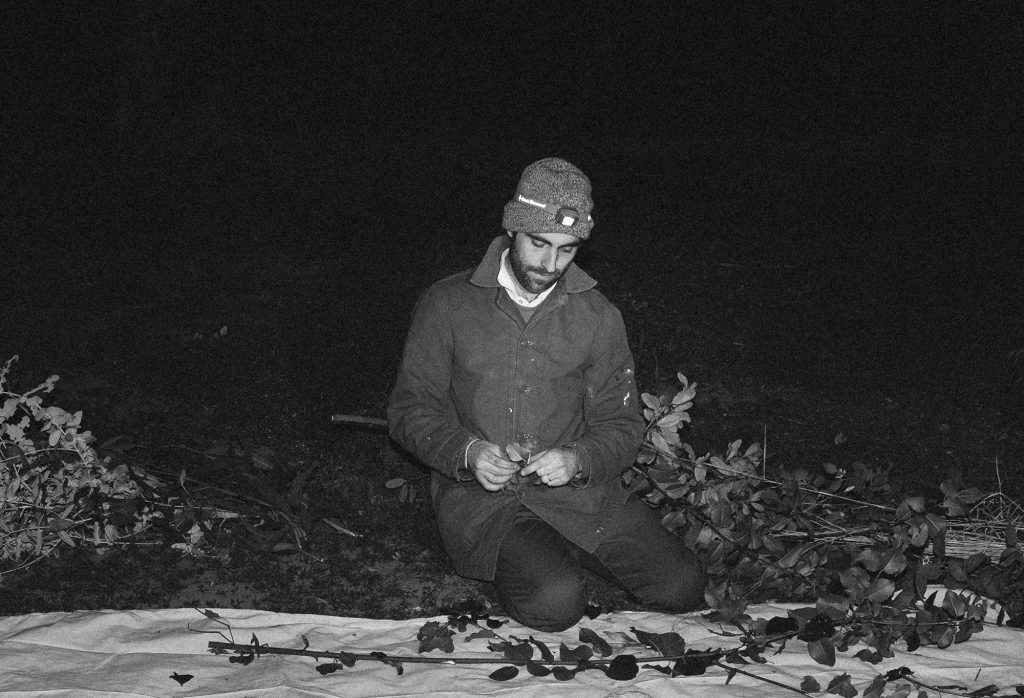
We caught up with the artist about his unusual studio practice.

Naomi Rea

It’s not easy to catch up with Sam Falls, an artist who is almost always on the move. From the remote woodlands surrounding New York City to the Mojave desert in super bloom, Falls travels the country in his camper van making unusual portraits of nature.
He creates his works by scattering foliage and pigments over canvas, and then leaving the fabric outdoors, sometimes for months on end, to weather the elements. The results—sun-bleached, windswept, and patterned with animal footprints—capture nature in soft splendor. The works sit somewhere between painting, photography, and sculpture, and Falls hopes they serve as a record of nature as it exists today.
Falls is currently showing work at Galerie Eva Presenhuber in Zurich, and is looking forward to a solo exhibition at MOCA Cleveland in 2022. We caught up with the artist as he was preparing for a cross-country trip from Los Angeles to New York, the two cities in which he is based, about the must-have supplies in his studio, what he’s listening to right now, and the last show that made an impression on him.
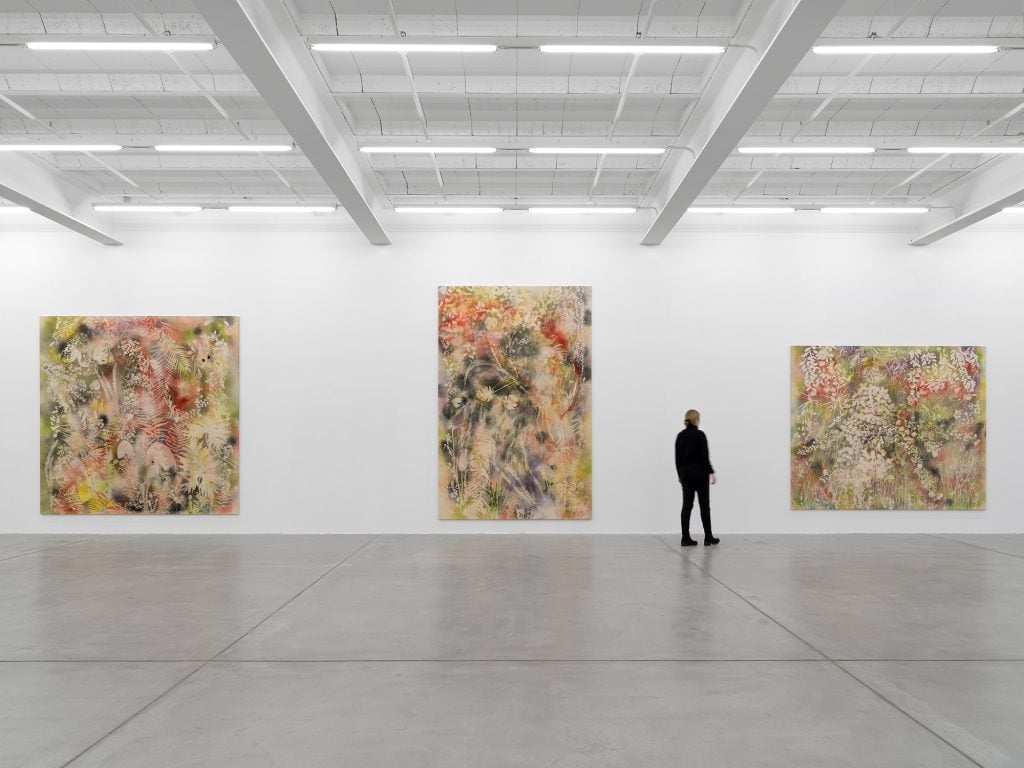
Installation view, “Sam Falls,” Galerie Eva Presenhuber, Maag Areal, Zurich, 2021. ©Sam Falls. Courtesy the artist and Galerie Eva Presenhuber, Zurich / New York.
What are the most indispensable items in your studio and why?
I guess the ceramic kilns because they do something necessary for completing the works that I can’t do otherwise. Also, my speakers and air purifiers are running whenever I am in the studio. And the water cooler. I use the staple gun a lot.
What is the studio task on your agenda tomorrow that you are most looking forward to?
Well, most of my favorite aspects of working take place outdoors, and those are the days I look forward to. In two days, I’ll begin driving cross-country to make new work, from Los Angeles to New York. I’m really looking forward to that.
What kind of atmosphere do you prefer when you work? Do you listen to music or podcasts, or do you prefer silence? Why?
I prefer to be alone in the woods working in silence at night. I will listen to music all other times except for when I’m in the act of making a work. Usually, I make a playlist that I stick with for a while to go with the feeling of the work and sometimes add to it as the project grows. When there’s a lot of post-production to get done, like stretching completed canvases before a show, I’ll listen to a podcast on history or sometimes politics, then music-based podcasts later on, and, in the 11th hour, when I’m exhausted, I will turn to stand up comedy.
What trait do you most admire in a work of art? What trait do you most despise?
I admire risk, which I think often comes in the form of vulnerability or experimentation, or ideally both. Some kind of pursuit that comes in any form from beauty and emotion to chance and hypothesis. I don’t like work that lacks care or personality, is repetitive, or could easily be described in words.
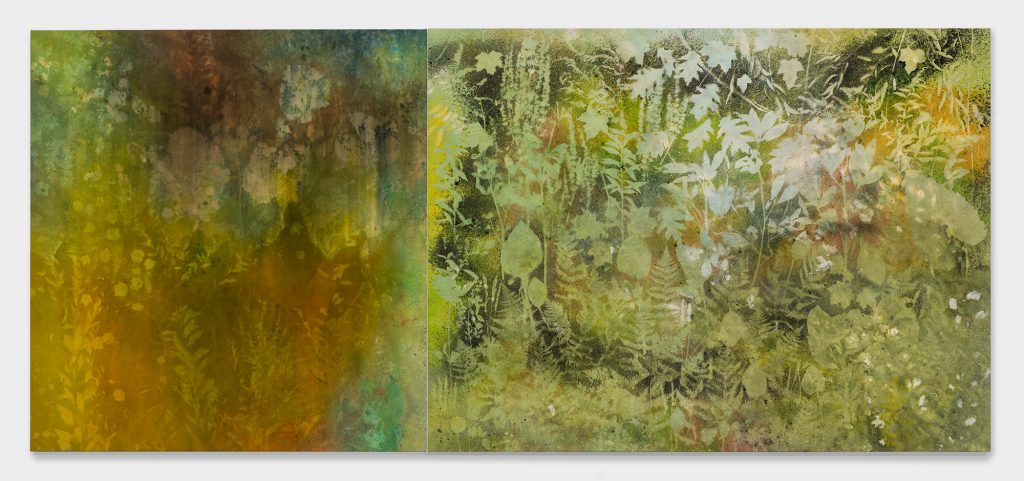
Sam Falls, Night Rain, Morning Mist (Poestenkill, N.Y., Spring) (2020). ©Sam Falls. Courtesy the artist and Galerie Eva Presenhuber, Zurich / New York.
What snack food could your studio not function without?
Water and coffee.
Who are your favorite artists, curators, or other thinkers to follow on social media right now?
I don’t look much on social media but I just listened to Dean Kissick on the podcast Red Scare and that was good. I have been reading poems by Kenneth Rexroth and, as always, David Berman.
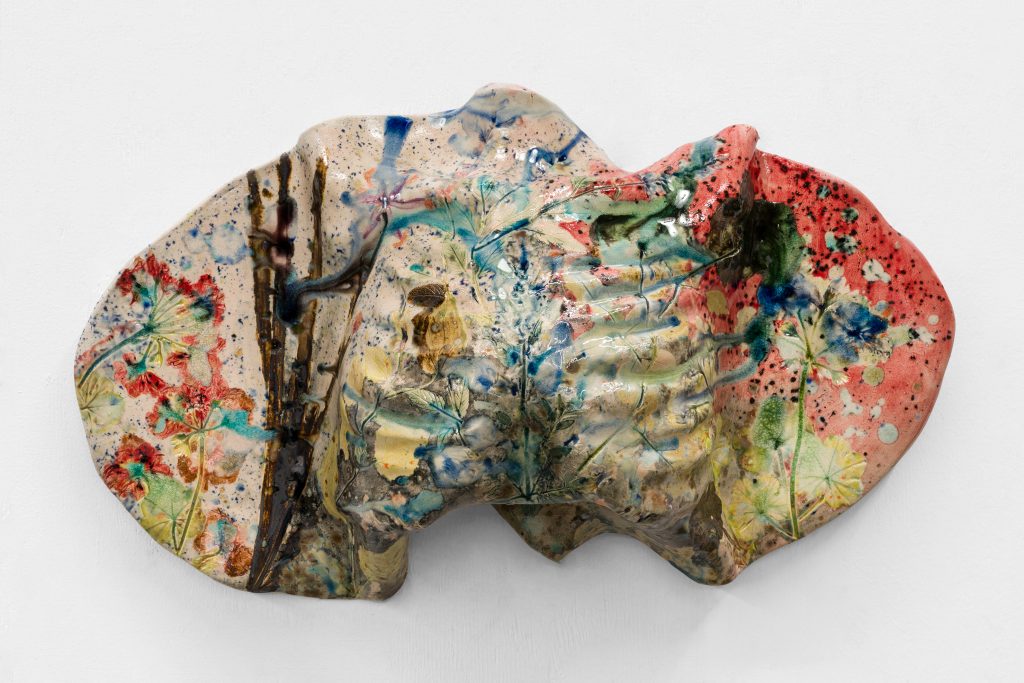
Sam Falls, Untitled (Air 2) (2021). ©Sam Falls. Courtesy of the artist and Galerie Eva Presenhuber, Zurich / New York.
When you feel stuck in the studio, what do you do to get un-stuck?
Go for a walk, run, read, camp.
What is the last exhibition you saw (virtual or otherwise) that made an impression on you?
Visiting the Museé national Gustave Moreau a couple years ago made a very strong impression on me. To see the space where he both lived and worked filled with such wonderful paintings and allegorical images hung densely on the walls was both overwhelming and inspiring.
I spent all day there going through the deep collection of paintings and drawings, enjoying, of course, the large iconographic symbolist paintings, but also discovering the later more abstract works from the “abstract cupboard,” as well as the great watercolor and gouache palette paintings, or “color tests,” that are there. It’s one of the best museums in the world.
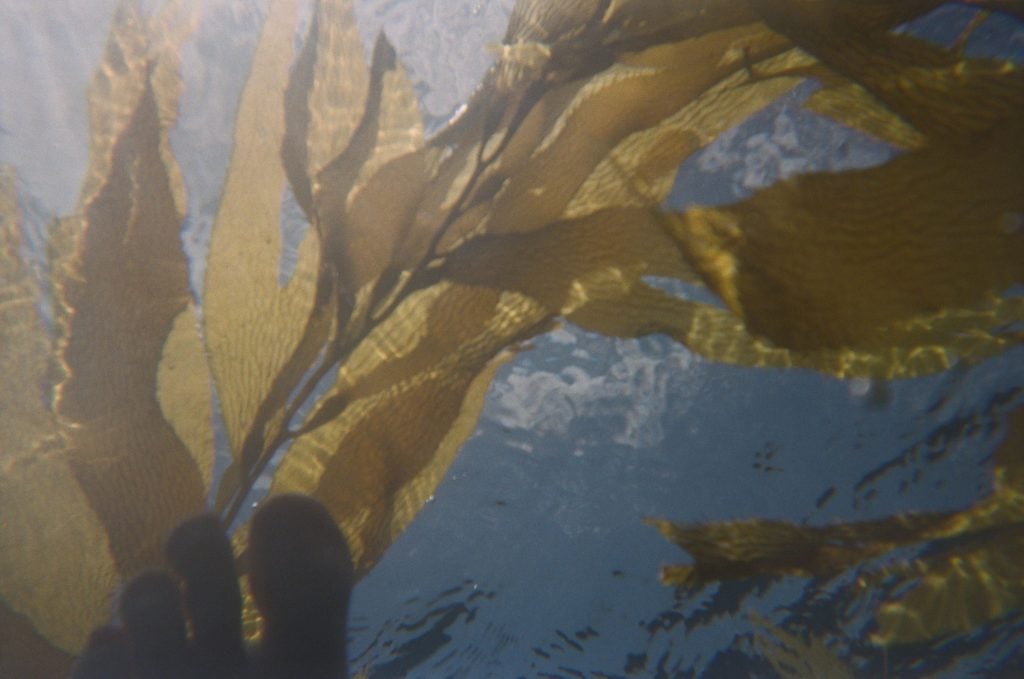
Swimming in the Pacific kelp forests. ©Sam Falls. Courtesy of the artist and Galerie Eva Presenhuber, Zurich / New York.
If you had to put together a mood board, what would be on it right now?
Dark Green
Vertebrae
The song “Night Time” by The Microphones from the album The Early Tapes 1996-1998
Driving in Vermont
Swimming in the Pacific kelp forests
The song “The Glow Pt. 4 (Version)” by The Microphones from the album Song Islands
The young Hans Reiter from Roberto Bolaño’s 2666. Here’s a quote: “At 6 Hans Reiter was taller than all the other 6-year-olds, taller than all the 8-year-olds, taller than all the 9-year-olds, and taller than half the 10-year-olds. At age 6, too, he stole his first book. The book was called Animals and Plants of the European Coastal Region. He hid it under his bed although no one at school ever noticed it was missing. Around the same time he began to dive. This was in 1926. He had been swimming since he was 4 and he would put his head underwater and open his eyes and then his mother scolded him because his eyes were red all day and she was afraid that when people saw him they would think he was always crying. But until he was 6, he didn’t learn to dive. He would duck underwater, swim down a few feet, and open his eyes and look around. That much he did. But he didn’t dive. At 6 he decided that a few feet wasn’t enough and he plunged toward the bottom of the sea.”
Yellow
Montana
Crows
Thunder
Rib cage
“Sam Falls” is on view at Galerie Eva Presenhuber, Maag Arel, Zurich through May 15.